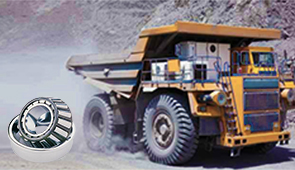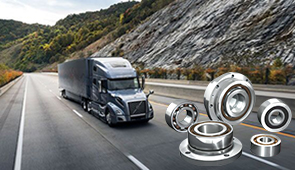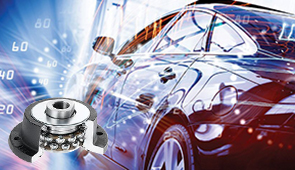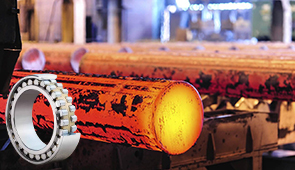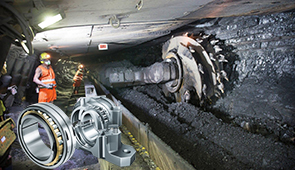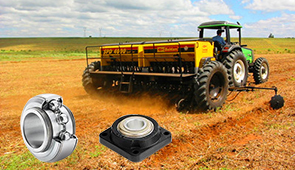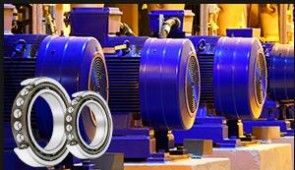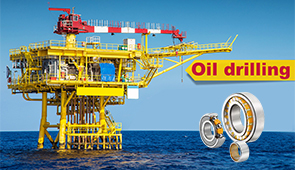How Ball Bearings Reduce Friction: The Ultimate Guide
Ball bearings are one of the most vital yet often overlooked components in countless machines and mechanical systems. From enabling the smooth movement of industrial machinery to optimizing the performance of automobiles and household appliances, these seemingly simple devices play a critical role in reducing friction and enhancing efficiency. But how exactly do they work? Why are they so effective at minimizing wear and tear in high-stress environments? This guide dives into the science, engineering, and design principles behind ball bearings to help you understand their function and importance. Whether you’re an engineer, a mechanic, or simply a curious mind, this article will provide you with a comprehensive overview of how ball bearings operate and why they are indispensable in modern engineering.
What is a Ball Bearing and How Does it Work?
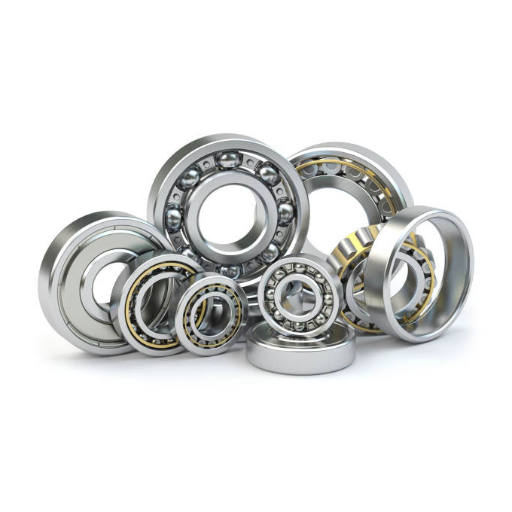
Understanding the Bearing Design
A ball bearing sits at the crossroads of motion and friction. It is a compact device that carries both radial and axial loads while asking very little energy in return. Within its casing, an outer race, an inner race, a row of hardened balls, and a cage work in unison. Because the spheres roll rather than slide, energy that would otherwise dissolve into heat vanishes instead. That quiet magic is one reason these bearings endure through countless revolutions with only mild maintenance.
Materials matter more than most people first assume. Engineers frequently spec stainless or heat-treated steels, though specialty ceramics now fill niches requiring even more hardness. Each ring is ground to a few microns of tolerance, so the balls pivot smoothly without jamming or grinding. The retaining cage guards against crowding; if two balls accidentally touch, extra wear begins in seconds, so designers give the cage that extra load.
Variants multiply once manufacturers follow the basic recipe. Angular-contact designs cradle offset loads, while deep-groove types favor light axial pushes alongside blistering rpm. Each adaptation tells a story about expected forces, shaft speed, and the space available, leading the engineer to draw yet another part number.
Sealed ball bearings form a tight barrier that keeps dust, moisture, and other particles away from delicate inner races, so the parts stay clean and functional for a longer stretch. Thanks to that simple yet effective enclosure, the same bearing style is found on everything from passenger engines and jet turbofans to factory conveyors and handheld power tools.
The Role of Rolling Elements in Reducing Friction
Specially profiled rolling elements sit at the heart of modern antifriction bearings. Rather than sliding over a journal, a ball or cylindrical roller turns on its axis and travels onward, exchanging surface contact for a brief, periodic touch. This transition from continuous slide to intermittent roll drastically cuts the area engaged at any moment and switches the dominant force from sliding friction to the lighter, transient effort known as rolling friction.
First, each element is ground to a precise radius that shapes the load into a wide, uniform band, curbing the deep grooves and flaking that would otherwise mark the raceway. Second, a thin lubricant film-to-thick oil in rough service-steps in whenever surfaces threaten to touch, sliding out the real contact so the motion occurs against the liquid instead of against metal. Together, geometry and grease stretch service life and allow safe operation across unexpected spikes in load or rotational speed.
Rolling elements underpin technologies as varied as wind-turbine nacelles spinning on year or quarry belts creeping mile after mile. Their narrow profile and dense steel structure can swallow heavy radial loads, handle unexpected axial push, and keep both heat and energy loss in check. New alloys, specialty coatings, and lasers-measured finishing have lately pushed the upper limits so bearings remain reliable in steel mills, high-temperature engines, and grit-laden construction sites where lubrication schemes struggle to keep pace.
How Ball Bearings Help in Machines
Ball bearings occupy a quiet but indispensable role in engineering. By inserting hard, polished spheres between moving surfaces, they curtail friction and generate a film of lubricant that promotes smoother machine operation. That simple mechanism defers heat buildup, elongates component life, and translates mechanical input into useful motion with far less wasted energy.
Each row of balls is capable of withstanding radial forces that press inward as well as axial forces that push end-to-end, granting designers the freedom to install the same bearing in pumps, gearboxes, and wind-turbine generators without constant redesign. Whenever local stresses spike, the bearing redistributes them, shielding the rest of the assembly from premature failure.
Because the spheres hold shafts on a near-micrometric centerline, high-speed spindles run truer, power tools vibrate less, and aircraft engines maintain tighter tolerances even at extreme RPM. In applications where timing, alignment, and safety are non-negotiable, that steady-eyed control permits manufacturers to push productivity boundaries while safeguarding both personnel and equipment.
How Do Ball Bearings Reduce Friction?
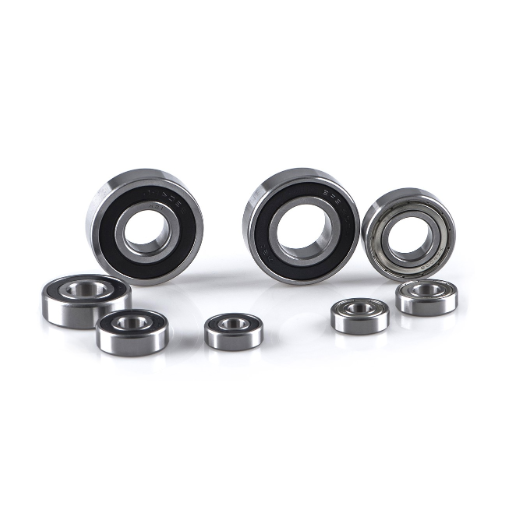
The Science Behind Rolling Friction vs. Sliding Friction
Rolling friction and sliding friction represent two distinct mechanical responses to motion between contacting bodies. The first occurs when a sphere or cylinder travels along a surface without itself losing shape; a skateboard wheel crossing asphalt provides a familiar example. Because the line of contact shifts rapidly and only a minuscule patch of rubber touches the ground at any instant, rolling resistance generally registers as low.
Sliding friction emerges whenever two flat planes pass across one another, as when a drawer is pulled open or a brick is dragged along concrete. Greater surface overlap exposes more microscopic peaks and valleys to one another, turning those tiny brooks of contact into miniature roadblocks that waste energy as heat. By confining pressure to a limited band, rolling motion quietly outsmarts sliding motion, therefore sparing both material and muscle.
Recent breakthroughs in the study of surface materials have provided fresh momentum to the performance of rolling elements. Engineers now coat bearings with low-friction films- silvery polytetrafluoroethylene vapors or tough ceramic oxides- in hopes of pushing durability another rung up the ladder while keeping drag at a whisper. Combined with telemetry-driven design tweaks and grease delivered by micro-pumps, a top-tier ball bearing now drags with a coefficient of about 0.001, a figure even sleek sliding interfaces seldom touch. For motors that spin hard or turbines that climb high, that tiny fraction hoards energy, cuts heat, and buys confidence over miles of punishing service.
Why Ball Bearings Are Designed for Efficiency
Thanks to that rolling massage they provide, sliding surfaces turn into history; the bearings glide instead of grinding. A crusty turbine or a brand-new motor draws noticeably less power whenever those small steel spheres ride along. When builders grind the raceways to tolerances measured in a few microns, the invisible benefit is a sharp drop in heat and wear.
Ceramic blends, chromium-enriched steels, and a handful of proprietary alloys shrug off rust that turned older bearings into ball-shaped sandpaper. Flimsy coatings are also on the ropes; diamond-like-carbon films and moly-disulfide layers stick to a surface marathon-style and force friction numbers so low they border on guesswork. Computer animations from fluid-dynamics codes then cross-check the oil path, spreading lube evenly instead of letting it whirl away like tossed confetti.
Efficiency in ball bearings directly translates into reduced power requirements for systems, lower heat generation, and less maintenance downtime. These factors are particularly critical in industries such as aerospace, where heightened reliability can substantially impact performance and safety. By combining cutting-edge material science, precision engineering, and robust testing methodologies, ball bearings are vital components designed to ensure maximum output with minimal energy expenditure over extended operating cycles.
Impact of Bearings on Wear and Tear
Bearings quietly shoulder much of the mechanical punishment inside rotating machinery, keeping everything moving in unison and preventing premature breakdowns.
- Friction Reduction
High-grade rolling elements and carefully controlled lubrication slice friction losses by as much as thirty percent, studies confirm. Less sliding resistance translates almost linearly into longer-lived shafts and gears, an effect that engineers routinely factor into efficiency estimates.
- Load Distribution
By spreading weight over a broad contact area, a single bearing can limit peak stress to a fraction of the material yield point. Several test series have recorded extension of component service lives by fifty percent or more, where crush and bending fatigue once drove failures.
- Contaminant Protection
Well-designed seals act like microscopic doorways, permitting lubricant flow while blocking grit and moisture. Field data indicate that this simple geometry slashes contamination-driven wear by upwards of forty percent, a critical advantage in mining or marine applications.
- Vibration Damping
Some modern bearings incorporate viscoelastic materials that absorb high-frequency chatter before it reaches supporting structures. Laboratory trials suggest that such damping extends machinery operating intervals by roughly twenty-five percent, cushioning tools and operators alike.
- Surface Wear Control through Material Advancements
Progress in bearing fabrication-ceramic-infused composites and advanced vapor-deposited steels, to name two avenues-is steadily cutting surface attrition. One laboratory trial recorded an alumina-silicon-carbide ring lasting five times as long as a conventionally machined steel counterpart when subjected to the same 600-degree, 15,000-rpm workload.
Performance at that level eases the everyday strain on shafts and housings, lengthens scheduled outages, and quietly extends the working life of machinery that governs everything from wind turbines to rail transport.
Types of Ball Bearings and Their Uses
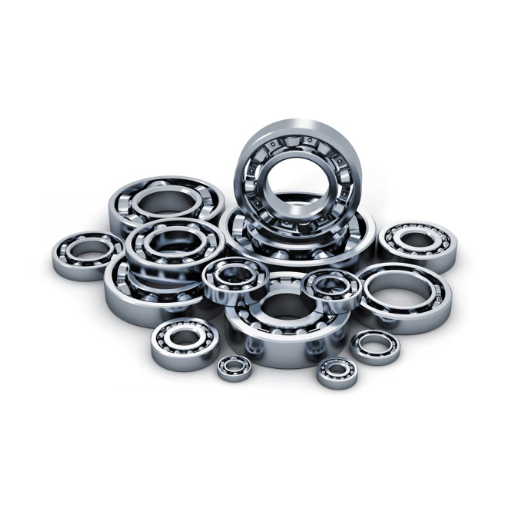
Exploring Different Types of Bearings
Bearings sit at the heart of nearly every spinning machine you can name. Their main job is to chip away at friction, much like oil in a running engine, so parts don’t grind themselves to dust. One small bearing can keep a massive turbine humming, and that kind of multitasking shows why engineers trust them.
- Ball Bearings: A ball bearing is the Swiss Army knife of rotational parts. It’s made of hard little spheres that roll instead of slide, so heat and wear drop off almost instantly. You’ll find these guys in everything from home ceiling fans to jet engine starters, which speaks to their no-fuss nature.
- Roller Bearings: Roller bearings swap balls for cylinders or tapered wedges, and that change lets them shoulder a lot more weight. Picture a logging truck crawling up a steep haul road; chances are, a beefy roller bearing is what keeps the axles from buckling. Most of the world’s punchy industrial gear relies on this simple upgrade to tackle massive radial pressure.
- Thrust Bearings: Thrust bearings exist for one reason: to catch sideways forces that try to shove a shaft off-course. Climb under your car and look at the clutch assembly- you’ll spot a thrust bearing keeping the gearbox guts lined up. In modern aerospace or oil-drilling rigs, many of these components are laminated from ceramic or super alloys, giving them the grit to survive insane pressure while still spinning freely.
- Needle Bearings: Needle bearings pack a lot of power into a tiny footprint. Their long, thin rollers let engineers shove big radial loads into narrow slots, perfect for cramped automotive transmissions and gearboxes where every millimeter counts.
- Spherical Bearings: Spherical bearings shrug off misalignment like it’s no big deal. That freedom makes them go-to parts in off-road trucks and heavy machines, keeping everything moving smoothly even when angles shift and stress ramps up.
- Magnetic Bearings: Magnetic bearings skip the metal-on-metal grind by floating components on an invisible electromagnetic cushion. You’ll find them inside precision turbines and certain medical gadgets, because the frictionless ride slices wear and boosts efficiency.
Bearings might look like ordinary metal rings, but they hold machines together and keep them running smoothly. Every new experiment in plastics, ceramics, or nano-coatings pushes the technology forward. Pick the right part and gadgets hum along for years; miss the mark and they fail early.
How to Choose the Right Type for Your Needs
Start by checking the kind of load you’re up against. Radial loads push sideways, axial loads pull along the shaft, and some jobs throw both at you. A good old ball bearing handles light chores just fine, but throw in heavy radial pressure and you might want a tapered roller instead.
Next up is speed. Some machines spin fast- think electric motors or CNC tools- and they need a bearing built for the rush, often an angular-contact style. Slower gear, such as conveyor rollers, can work with tougher, thicker rings that don’t mind the weight as much.
Don’t forget the weather. Heat, dirt, and humidity love to sneak inside bearings, so a sealed or stainless-steel unit can save a lot of trouble later. Finally, accuracy counts; a medical pump needs an ABEC-7 or ABEC-9 to keep everything in line, while an old factory gearbox would be happy with anything that just won’t break.
Finally, you can’t ignore the need for good lubrication. Many bearings keep spinning smoothly only if you pump in grease or oil on a regular schedule. In dusty or hard-to-reach places, though, a sealed or self-lubricating bearing usually steps up and does the job by itself. Picking the right scheme and making sure the lube is friendly with your equipment speeds up work today and stretches out the machines’ working life tomorrow.
Specialized Types of Ball Bearings for Industrial Machinery
Choosing the right ball bearing isn’t just guesswork; it starts with knowing the machine’s quirks and the conditions it has to live through. A few popular designs show how engineers balance space, weight, and raw performance in real-world projects.
- Thin Section Ball Bearings: Thin-section ball bearings are all about saving inches without losing strength. The profile is so slim that an ordinary pocket calculator could hide one inside. Aerospace technicians, robotic designers, and medical-device builders praise the same frame for fitting under the tightest clearances. Even with the narrow cross-section, the load limit stays surprisingly high.
- Angular Contact Ball Bearings: An angular-contact bearing dives head-first into a mixed-load fight. Because the inner and outer raceways band at a noticeable angle, both radial and axial strains land without fanfare. Machine-tool spindles and steam-turbine shafts sing in high-speed harmony thanks to that upgrade. Swap the mounting orientation, and the bearing still keeps working as if nothing happened.
- Ceramic Ball Bearings: Ceramic ball bearings laugh at heat while steel feels nervous. The low thermal-expansion rate means they slide straight into chemical plants, food lines, and high-output electric motors without needing special housing. Friction drops so low in salt-corroded spaces that maintenance schedules stretch into the rare category of ‘whenever-you-get-a-minute.’
- Double-Row Ball Bearings: Unlike standard ball bearings that sit in a single track, a double-row design stacks two parallel circles of balls. That extra row boosts the part’s power-handling ability, so it winds up in heavy-duty gear like bulldozer axles and freight-train trucks. When machines weigh tons and keep moving, this bearing keeps them honest.
- Self-Aligning Ball Bearings: These bearings can tilt a bit without crying foul. Built to roll straight even when the shaft bends, they shrug off the lopsided forces that mess with turbines, grain conveyors, and barn fans. A small twist in the housing won’t grind the balls or ruin the race.
- Precision Ball Bearings: CNC mills, aerospace gyros, and high-end robotics rely on that ultra-tight fit so parts spin at exactly the right second. If the yaw is even a hair off, the whole system goes haywire.
Choosing the right bearing is not just guesswork; it outright saves downtime and keeps big projects on budget. Each type, certainly, each little steel cage denies a different engineering headache and hands managers the reliability they crave.
Maintenance Tips for Ensuring Smooth Rolling
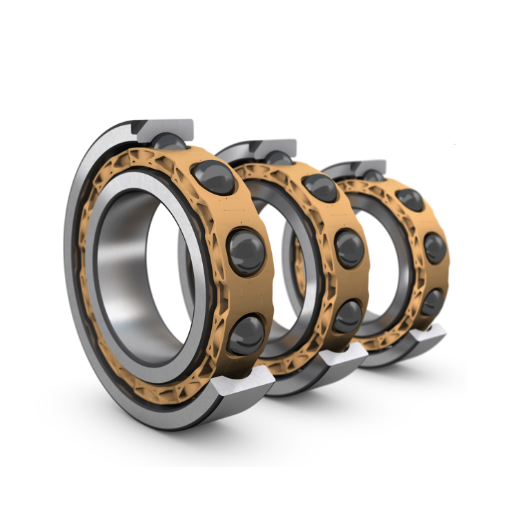
The Importance of Lubrication in Bearings
Every moving machine part relies on one thing to keep ticking: good grease, oil, or whatever lube you prefer. Add that film, and the parts slide instead of grind.
- Friction Reduction: A decent lube film is like invisible Teflon. It keeps the rolling balls or rollers from smashing directly into the steel tracks, so energy doesn’t vanish into wasted heat.
- Minimized Wear and Tear: Slip that oil or grease in, and the pieces float instead of fighting. Less fight means a longer life, even when the load tries to crush everything.
- Heat Dispersion: Friction makes heat, and heat makes trouble. The right lubricant scoops that heat away, almost like a blood vessel carrying warmth away from a muscle.
- Protection Against Contaminants: Think of grease as a rain jacket for metal. It blocks dust, water, and rust chemicals, letting the bearing spin freely even when the outside world gets ugly.
- Corrosion Prevention: Lubrication does more than let parts slide together; it works like a raincoat for metal. In rough spots- saltwater pumps, factory presses, good oil keeps oxygen and moisture away, stopping rust before it starts.
Choosing the right grease, then sticking to a regular lube schedule, is the quick win that stretches a bearing’s life. When you match product and plan to the job, you’ll squeeze out every last hour of useful service.
Reducing Wear and Tear with Proper Care
Keeping machines running smoothly means paying attention to three big areas- lubrication, the worksite environment, and steady monitoring. Good grease or oil cuts down on metal rubbing against metal, so things wear out more slowly. Choosing a lubricant with the right thickness and special additives lets parts do their job without being chewed up.
The workshop climate can mess things up, too. Dust, water, and gritty particles sneak in and cause damage, so using seals, filters, and sturdy covers is a must. Temperature swings also create hidden strain; controlling heat helps stop silent cracking.
Vibration sensors and infrared cameras read the signs before they grow into breakdowns. Sticking to factory-recommended check-ups on top of that keeps performance numbers where they belong. Altogether, these steps trim unexpected downtime and save a pile of repair cash.
Why Ball Bearings Are Used in Various Applications
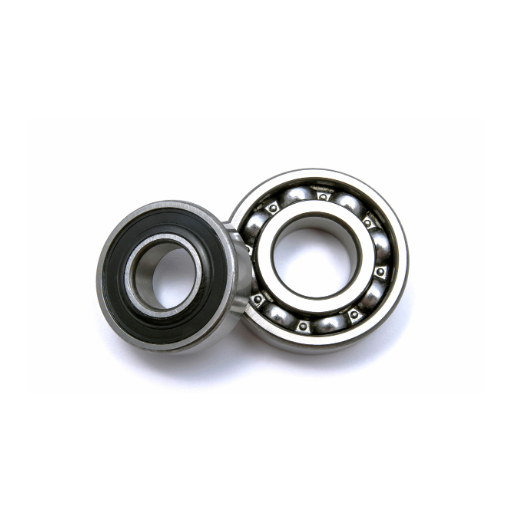
The Role of Bearings in High Speeds and Heavy Loads
Bearings seem simple, yet they do the heavy lifting in factories, turbines, and even your mom’s mixer. Thanks to smart design choices, these little circles cut friction almost like oil, letting metal parts slide by each other without fuss.
- Load Distribution Efficiency
Engineers build bearings to spread out weight as evenly as peanut butter on toast. Take a spherical roller bearing: it shrugs off sideways stress, keeps moving, and survives the grinding drills found on a construction site.
- High-Speed Performance
Precision ball bearings have been clocked at a stunning 1,500,000 DN. That dizzying figure pops up inside jet engines and hospital centrifuges, where speed isn’t optional’s life or death.
- Extended Operational Lifespan
A well-greased bearing can tick for more than 100,000 hours, like a pocket watch passed down through generations. Chrome rings and ceramic balls fight wear, so technicians swap them out far less often than you’d guess.
- Energy Efficiency
Less friction means less wasted power, plain and simple. Modern tapered roller bearings trim automotive drivetrain drag by nearly 30 percent, letting your engine breathe easy and your gas tank last just a bit longer.
- Temperature and Vibration Resistance
Ceramic hybrid bearings use special coatings and blended materials that handle crazy temperature swings from -200 to 1,200 (-129 to 649) yet still soak up vibration. This mix of toughness and shock absorption is a must for gear in steel mills and power stations.
When they keep speed up and weight down, these bearings let machines hit peak performance every shift. That reliability helps factories stay on schedule, and money flows.
Understanding the Coefficient of Friction in Bearings
The coefficient of friction in a bearing defines how much effort it takes to get that part spinning and, by extension, how much electricity or fuel the entire machine will gulp down. Lowering that number is basically engineering glamour for rotating kit, because every decimal point saved usually shows up as dollars back in the maintenance budget.
- Material Properties: Swap in plastic, glass-ceramic, or an engineered polymer, and the COF drops almost as a footnote; do the same with garden-variety steel, and you may wind up sweating metal fatigue way worse than you bargained for.
- Surface Finish: Run-of-the-mill grinding or polishing does only half the job, yet a dialed-in mirror finish stops most of the hidden kisses between micrometer peaks and valleys, so the C-of-F cowers instead of gnawing away.
- Lubrication: Engine builders still rave about a pin-head-thin oil film; pair the right synthetic juice with the right bore speed and temp, and contact points vanish under the lubricant’s invisibility cloak.
- Applied Load and Rotational Speed: The two most immediate variables- how heavy the machinery sits on its bearings and how briskly the shafts spin- dictate the coefficient of friction. A bigger weight squeezes the surfaces together, feeding friction, while blistering speed sometimes invites a slippery cushion from the lubricant’s fluid pressure.
- Temperature: Heat has its way of changing things. It thins oils, stretches metals, and can flip the friction number on its head. Components meant for furnace-like conditions are crafted from alloys and grease that survive the scorch.
Engineers keep a close eye on that friction dial because it shows up everywhere-from factory turbochargers to laboratory piezo devices. Getting the balance right lowers energy bills, stretches service intervals, and lets machinery run with its cool still intact.
Examples of Ball Bearings in Everyday Machinery
Ball bearings lie at the heart of many machines, quietly letting shafts spin while saving components from the grinding insult of friction. In modern cars, they cluster inside wheel hubs, gearboxes, and alternators, absorbing sudden shocks and temp swings that would slow lesser designs. Electric motors lean on the same little spheres to keep rotors aligned and to trim the waste heat that pushes energy bills higher.
Open a household utility cabinet, and the pattern repeats. Washing-machine drums swing through soaking cycles with sidelong loads that easily outrun most bearings, yet a well-made set keeps them on course. Ceiling fans glide for hours and sometimes for years without begging for service-thanks largely to a few tiny ball races tucked into the center.
Aerospace engineers depend on even stranger endurance. Aircraft engines and flight-control linkages spin at speeds that mock anything found on the ground, yet a properly rated bearing shrugs and asks for another mission. The common feature is a high load rating crossed with stubborn resilience, a combination that lets ball bearings prop up reliability wherever rotation collides with heavy-duty demands.
Frequently Asked Questions (FAQ)
Q: How do ball bearings work to reduce friction?
A: Ball bearings work by replacing sliding friction with rolling friction, which has a lower coefficient. This action significantly reduces the friction between the moving parts, allowing for smoother operation.
Q: What type of friction do ball bearings minimize?
A: Ball bearings minimize sliding friction by converting it into rolling friction, which is inherently lower. This helps reduce friction and wear between the two surfaces in contact.
Q: Why is the use of ball bearings crucial in mechanical systems?
A: The use of ball bearings is crucial because they help reduce friction between moving parts, leading to increased efficiency and longevity of mechanical systems. They provide a solution for reducing friction and wear.
Q: Can you explain the role of deep groove ball bearings?
A: Deep groove ball bearings are ideal for applications that require handling radial and axial loads. They provide smooth rolling action that significantly reduces friction between the moving parts.
Q: How does the contact between the bearing and races affect friction?
A: The contact between the bearing and the races is minimized to a point of contact, reducing frictional resistance. The rolling action of the steel ball bearings helps reduce friction by providing smooth motion.
Q: What materials are typically used in ball bearings to help reduce friction?
A: Ball bearings are often made from materials like steel and ceramics. These materials ensure durability and help reduce friction and wear in a wide range of applications.
Q: Why is lubrication important in ball bearings?
A: Lubrication is important because it minimizes friction between the moving parts and helps prevent wear and overheating. It enhances the performance and lifespan of the bearings.
Q: What is the significance of rolling action in ball bearings?
A: The rolling action significantly reduces the friction by ensuring that the contact and friction between the moving parts are minimized, allowing for efficient and smooth operation.
Q: How do ball bearings compare to other bearings in terms of friction reduction?
A: Ball bearings generally have a lower frictional resistance compared to other bearings due to their rolling motion, which replaces sliding friction with rolling friction, resulting in a lower coefficient of friction.
Q: What should you consider when selecting a supplier for ball bearings?
A: When selecting a supplier, consider their reputation, the quality of bearings they provide, the range of applications they cover, and their ability to supply the specific type of bearing needed for your project.
UCTH213-40J-300 with Setscrew(inch)
CNSORDERNO: Normal-duty(2)
TOGN: UCTH213-40J-300
SDI: B-R1/8
SD: 2 1/2
UCTH212-39J-300 with Setscrew(inch)
CNSORDERNO: Normal-duty(2)
TOGN: UCTH212-39J-300
SDI: B-R1/8
SD: 2 7/16
UCTH212-38J-300 with Setscrew(inch)
CNSORDERNO: Normal-duty(2)
TOGN: UCTH212-38J-300
SDI: B-R1/8
SD: 2 3/8
UCTH212-36J-300 with Setscrew(inch)
CNSORDERNO: Normal-duty(2)
TOGN: UCTH212-36J-300
SDI: B-R1/8
SD: 2 1/4
UCTH211-35J-300 with Setscrew(inch)
CNSORDERNO: Normal-duty(2)
TOGN: UCTH211-35J-300
SDI: B-R1/8
SD: 2 3/16
UCTH211-34J-300 with Setscrew(inch)
CNSORDERNO: Normal-duty(2)
TOGN: UCTH211-34J-300
SDI: B-R1/8
SD: 2 1/8









